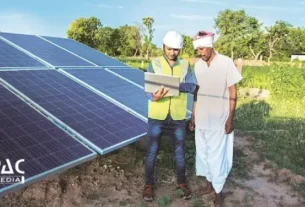In Short : Through the PM Surya Ghar: Muft Bijli Yojana, Haryana is setting ambitious new goals to accelerate its energy transformation and move toward renewable energy. Without central funding, the state intends to solarize all 4,523 surveyed government buildings by December 31, 2027, with a total solar capacity of 122 MW, and construct 2.2 lakh rooftop solar (RTS) systems by the end of the fiscal year 2026–2027.
Important Points & Strategic Implications
With rural areas being given priority for solar adoption, these programs provide access to solar energy systems throughout Haryana, supporting the movement towards decarbonization, net-zero emissions, and climate action.
Mechanism for Inclusive Subsidies
In order to make solar panels more affordable for economically disadvantaged groups, Haryana is providing two subsidies: State Financial Assistance (SFA) for one lakh Antyodaya families, which is given on a first-come, first-served basis, and Central Financial Assistance (CFA) from MNRE, which is credited directly to bank accounts within 15 days of approval.

More Wide-ranging Effects on Haryana’s Green Economy Focus Area Impact of Clean Energy on the State’s Renewable Energy Drive encourages the energy transition, energy efficiency, and solar energy systems in both public and private domains. Resource and Climate Strategy supports the green economy at the state and local levels and expedites India’s climate action goals. Fairness and a Just Transition provides cheap, sustainable energy to low-income families, facilitating a fair transition. Green Employment & Regional Ability New job possibilities in clean tech, installation, and operational skills are created by the rollout.
By implementing these audacious plans, Haryana is doing more than just building up its green energy infrastructure; it is establishing the groundwork for a sustainable, resilient, and inclusive energy future where social justice, technology, and policy all come together.




